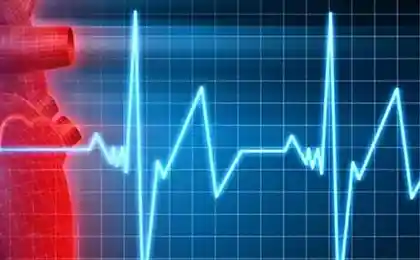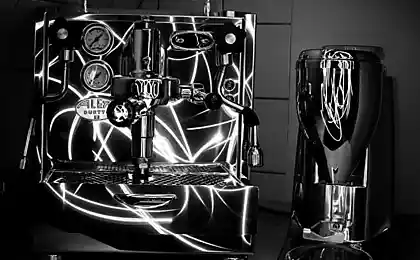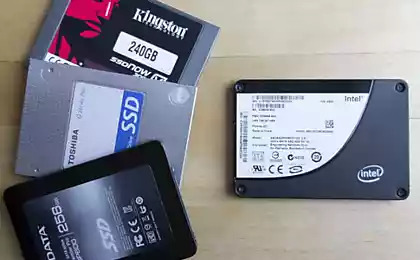1506
Why Surface Pro 3 digitizer has 256 levels of pressure?
Who реддите AMA passes development group Surface. One of the questions was why the third sёrfese used not Vakomovsky digitizer, and N-Trig that offers 256 levels of pressure. People worried that this will not be enough to work with confidence in drawing stylus.
The answer turned out exceptionally entertaining and easy to understand, and so I made a free translation. Some interesting things and not down, so do not scold severely. At the same time I would say that some of the terms of type, touch digitizer, I translated as I could, so if you know an established translation, in a personal email.
Hi, this StiviB. I was expecting a question about the digitizer, so pondering an answer a few days before the AMA. I hope that you and other interests will find it useful.
Currently there are three types of pen digitizers: electromagnetic, passive-capacitive (whose pen tip "pretends" finger), and active-capacitive.
Electromagnetic based on receiving a printed circuit board is usually located under the screen backlight. This board is not connected with fingertip digitizer, which is usually located in front of the screen. The board arranged pile of flat coils that emit electromagnetic field (such as one part of a conventional transformer). The second part of the transformer is in the pen. When offering of the pen to the screen, this part gets in the EM field and adds load. This load is distributed over several coils and the stylus position is interpolated from these data. This field runs up to 15 mm above the screen and it gives you the opportunity to realize the mechanism hover (hover). Data from the handle (the level of pressing buttons) are transmitted by modulating frequency. For the orientation of the pen is usually required secondary grid coils and a little trigonometry. Orientation is necessary to compensate for the mechanical parallax. Of all the technology, this is the oldest.
Passive-capacitive stylus just mimic your finger, and work with finger digitizer.
Finally, active-capacitive solutions began to emerge in the early 2000s. They also work with a fingertip digitizer, but the tip of the pen makes a signal which is received by the electrostatic capacitive digitizer lines. Imagine a mini-radio which transmits signals to the miniature antennas embedded in the screen. Crosshair capacitive lines (the place where the intersecting vertical and horizontal lines), which receives the strongest signal corresponds to the position of the pen. Of course, for such a pen, it requires a battery. By the way, you probably have heard a couple of years ago we bought a developer-class active capacitive digitizer, Perceptive Pixel. I am sure that this is the best pen technology for large screens. The market of this type of digitizer is actively developed by several manufacturers, because they are well integrated into the existing finger digitizers.
Now let's think about something makes stylus great in terms of iron.
1. Accuracy rules the ball. The more accurate and stable tip pen drawing on the screen, the easier and more convenient to use. The problem of accuracy depends on three parameters.
The answer turned out exceptionally entertaining and easy to understand, and so I made a free translation. Some interesting things and not down, so do not scold severely. At the same time I would say that some of the terms of type, touch digitizer, I translated as I could, so if you know an established translation, in a personal email.
Hi, this StiviB. I was expecting a question about the digitizer, so pondering an answer a few days before the AMA. I hope that you and other interests will find it useful.
Currently there are three types of pen digitizers: electromagnetic, passive-capacitive (whose pen tip "pretends" finger), and active-capacitive.
Electromagnetic based on receiving a printed circuit board is usually located under the screen backlight. This board is not connected with fingertip digitizer, which is usually located in front of the screen. The board arranged pile of flat coils that emit electromagnetic field (such as one part of a conventional transformer). The second part of the transformer is in the pen. When offering of the pen to the screen, this part gets in the EM field and adds load. This load is distributed over several coils and the stylus position is interpolated from these data. This field runs up to 15 mm above the screen and it gives you the opportunity to realize the mechanism hover (hover). Data from the handle (the level of pressing buttons) are transmitted by modulating frequency. For the orientation of the pen is usually required secondary grid coils and a little trigonometry. Orientation is necessary to compensate for the mechanical parallax. Of all the technology, this is the oldest.
Passive-capacitive stylus just mimic your finger, and work with finger digitizer.
Finally, active-capacitive solutions began to emerge in the early 2000s. They also work with a fingertip digitizer, but the tip of the pen makes a signal which is received by the electrostatic capacitive digitizer lines. Imagine a mini-radio which transmits signals to the miniature antennas embedded in the screen. Crosshair capacitive lines (the place where the intersecting vertical and horizontal lines), which receives the strongest signal corresponds to the position of the pen. Of course, for such a pen, it requires a battery. By the way, you probably have heard a couple of years ago we bought a developer-class active capacitive digitizer, Perceptive Pixel. I am sure that this is the best pen technology for large screens. The market of this type of digitizer is actively developed by several manufacturers, because they are well integrated into the existing finger digitizers.
Now let's think about something makes stylus great in terms of iron.
1. Accuracy rules the ball. The more accurate and stable tip pen drawing on the screen, the easier and more convenient to use. The problem of accuracy depends on three parameters.
- The visual parallax - from the tip of the pen until the ink on the screen. This is where you think is the tip of the pen.
- Electronic parallax - from the tip of the pen to a digitizer. This is where the digitizer pen tip is thinking.
- The accuracy of the digitizer and linear distortion on the area of the entire screen.
2. Tactile and audible sensations. The pen should feel and sound like you write / draw on this paper.
3. The pen itself - its weight, material, ergonomics.
4. Stable and accurate assessment of pressure.
5. Buttons to switch modes.
6. Delay drawing. It strongly depends on the application, and good developers seek to reduce it to a minimum.
7. Blocking palm for something to eliminate false touch.
8. Integration with the device.
Now that we know a bit about the subject, let's discuss some of the advantages and disadvantages of the above techniques. I deliberately skip discussion passive capacitive digitizers because of their obvious inferiority. Also, I want to say that among these technologies, in general aspect, there are no obvious leaders. Everything depends on the particular implementation, and integration of specific digitizer in a particular device. I have personally seen miserable for all three technologies from various vendors. So that the use of some type of digitizer by itself does not guarantee success.
Let's start with the electromagnetic stylus h5> 1. Accuracy. These stylus pens can be very accurate, but it strongly depends on the implementation. In order for such a pen worked well on the edges of the screen, the reception circuit board behind the screen should be slightly larger than the screen. Also, metal objects and magnets around the screen, or even near the device is strictly contraindicated, as they distort severely degrade the accuracy. These requirements limit the manufacturer's screen design and materials used. And because the EM field drift depending on the environment, the vendor should be well calibrated digitizer, as well as being taken into account the situation where the user places a metal object in front of the device (eg cover with metal insert).
2. The visual parallax - depends on the thickness of the screen, and none of the technology does not have a significant advantage in this respect.
3. Electronic parallax - as reception fee is buried deep in the device, digitizer pen must calculate the orientation and calculate the position of the orientation. Calculation of position often depends on exactly where on the screen is the tip of the pen. So you can not write a single mathematical transformation for all points on the screen. Few bother it and usually choose some easier way.
4. Stability and accuracy across the screen. The easiest way to check is to take a ruler and draw a few diagonal lines across the screen. Rate evenness lines. Rather, they will not be perfectly aligned, since This is difficult to achieve.
5. The pen itself - its weight, material, ergonomics. EM stylus may be made of metal. They can be any size and shape from thin and uncomfortable (but which can plug into the socket on the device), until more and more like a handle. Even they do not require batteries.
6. Stable and accurate assessment of pressure. Usually with this, EM styluses okay. By the way this is more dependent on the pressure curve than the number of bits reportiruemyh. I will explain in more detail below.
7. Integration with the device - as EM digitizer separated from digital digitizer would need around 0, 4-1mm thickness of several millimeters around the screen and a few tens of grams.
Active-capacitive stylus h5> 1. Accuracy. In the past I've seen here (trans .: in MS presumably) i> is not the best implementation, but I'm very pleased that we have made in Pro 3. We really raised the bar. Perot became much more precise and the entire screen. The first thing I hear from artists who first worked with this pen, it hvalby about the accuracy.
2. The visual parallax - depends on the thickness of the screen, as I said. In Pro 3, we reduce it to 0, 75 mm, and it is one of the lowest numbers that I have seen the tablet with the pen.
3. Electronic parallax - as capacitive line located immediately under glass (which we have only 0, 55 mm thick!), The parallax is small enough, and it's one of the reasons why our feathers are felt more precise.
4. Stability and accuracy across the screen - make test with a ruler!
5. The pen itself - its weight, material, ergonomics. Because we are not limited to pictures, we did klёvuyu adonirovannogo handle from aluminum, which fits comfortably in the hand. Yes, it needs a battery, but a battery can emit a stronger signal, which allows for example, by pressing on the end to open OneNote from a distance of five feet! Not do that with a passive stylus.
6. Delay - as I said, the delay is strongly dependent on the specific application. We really have one problem - he noticed a slight lag, but it is only in the hover.
7. Integration with the device - in comparison with the EM digitizer almost no restrictions. For example, our Type Keyboard cling to sёrfesu by magnets that would hurt the EM field.
Well, as promised, let's talk about the main Fedor about pressure. Some here worry that the 256-level pressure is not enough. You know, because you can promise any resolution, 10, 12, 14, 16 bit ... But in the end, even if the system produces a 16-bit number, it does not mean that it contains 16 bits of useful information. It's like the cameras with sensors of 20 megapixels - there is not always receive a 20 megapixel images useful. You can conduct an experiment that I spent last weekend. I took the best EM-tablet that I know and compare with Pro 3. First I downloaded softinu under the name «digiInfo», which is able to write Windows-message. Configure it to record reports of pressure on both plates. Then I made a small device that held the stylus on the screen and pressed with a force of about 50 g and (lane .: sorry that mix program with Newton) i>. Transcribed reportuemoe static pressure, imported into Excel, and here is what I saw: at EM-pen 1024-th levels, standard otklonienie was three times more than our pen has 256 levels. So, as a result, the performance is the same despite the extra two bits of resolution.
In other words, the pen Pro 3 measures the pressure in the range 10-400 grams and projects into one of 256 levels, and non-linearly as human pressure nonlinearly. But about 1-1 turns, 8 grams per level. A pen-EM measured in the range of 10-500 grams and theoretically receives about 0, 4 grams per level.
...
from the translator:
Then I lost the thread of the conversation. Steve started to talk about balance and about signal averaging.
I>Think about both those numbers and that is both super super sensitive ... the best weight scale I have can do .1 gram increments .... The only reason it works is cause it averages the heck out of the numbers which adds a considerable amount of lag ... this lag one can not do on a stylus ... so you are stuck with a nosier signal comparatively in a stylus. I> < / blockquote> But after thoughtful analysis, I think he offers to take any precise scale and see how well you can put your finger pressure. He apparently has in mind that 10-bit precision of the pen is excessive, leading to excessive noise, strong signal averaging, and eventually lag. I>
Source: habrahabr.ru/post/224365/
XCOM: Enemy Unknown ported to Linux
As I made Wi-Fi scales or where not quit, and generally keep quiet about life























